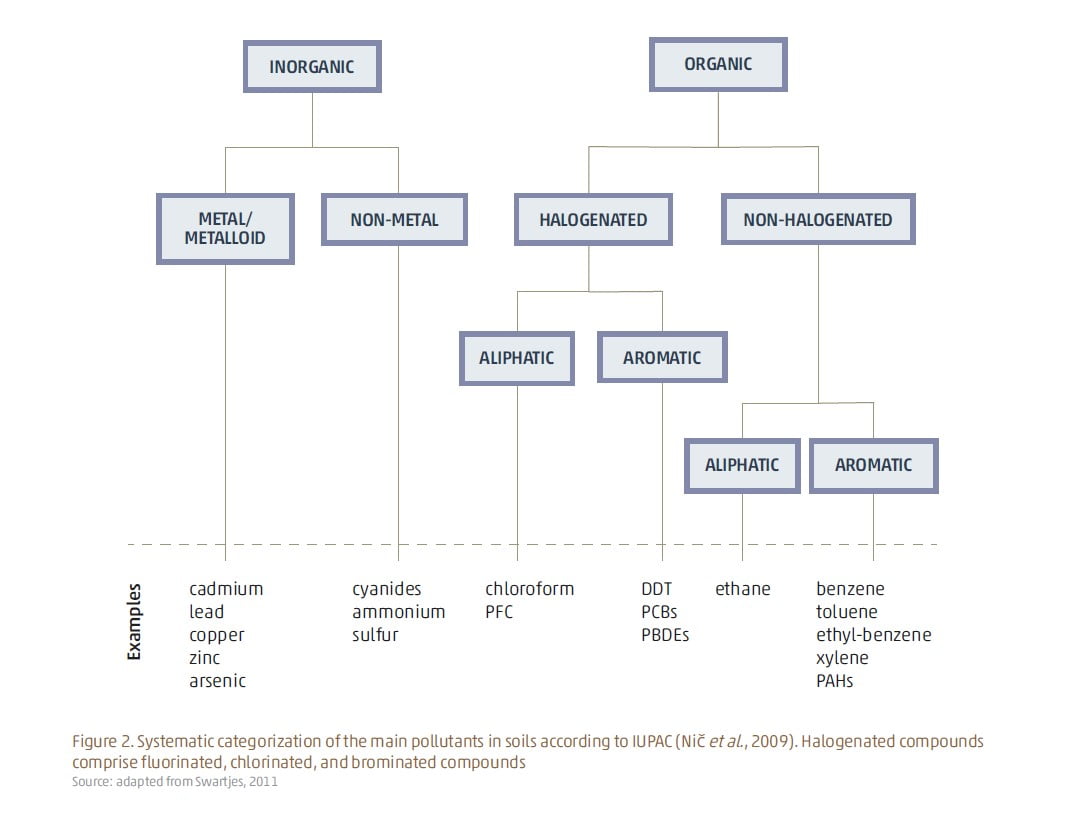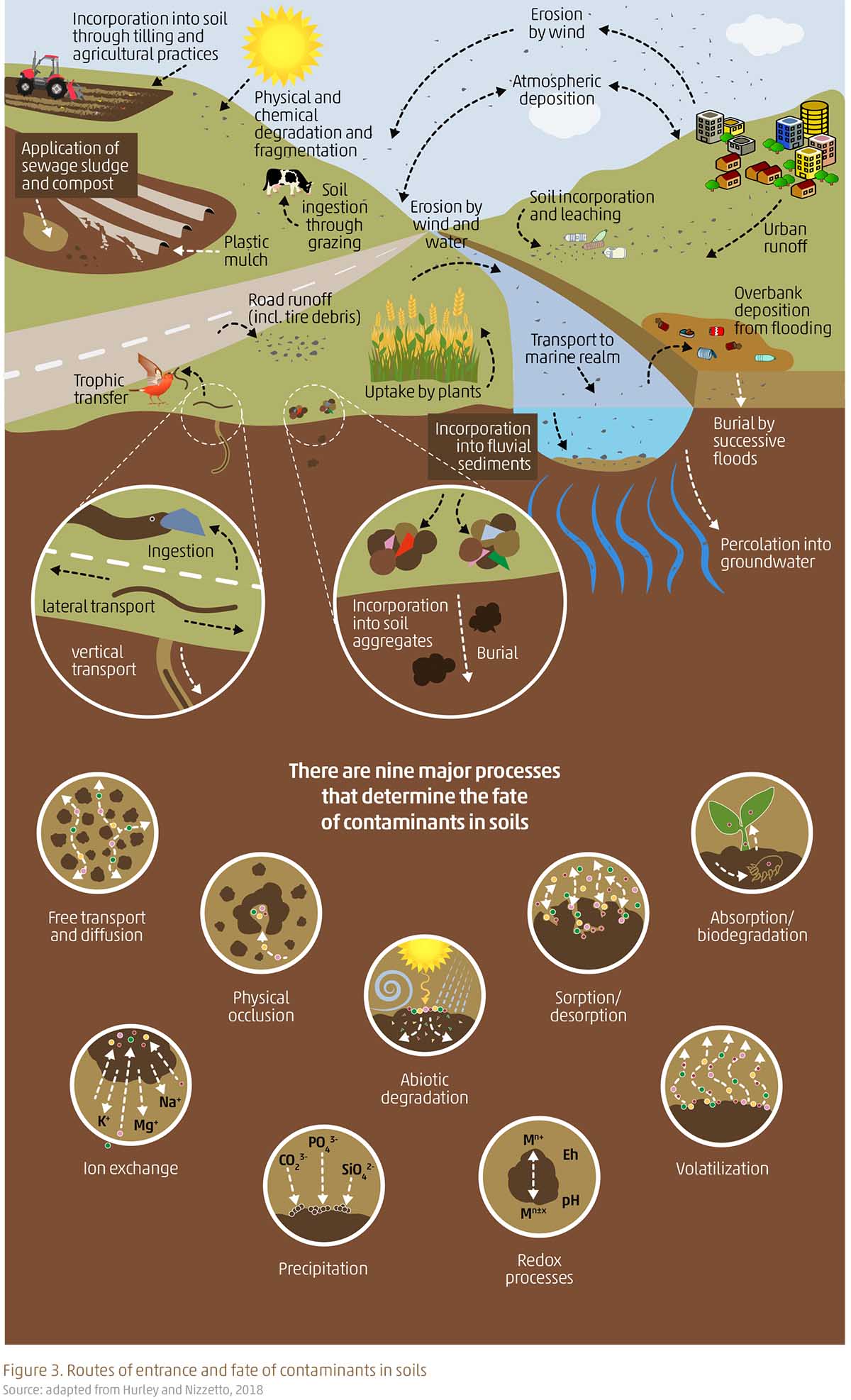Soil pollution may be invisible to the human eye, but it compromises the food we eat, the water we drink and the air we breathe. Contaminants enter the soil, then move to air and water and enter our agri-food systems, harming our environment and our health.
Q1 2021 hedge fund letters, conferences and more
As part of the World Environment Day celebrations and the launch of the recently declared UN Decade on Ecosystem Restoration (2021-2030), the Food and Agriculture Organization (FAO) and the UN Environment Programme (UNEP) will launch the Global Assessment of Soil Pollution report.
Executive Summary
Global environmental degradation due to pressures from the growing demands of agri-food and industrial systems, responding to a rising world population, is one of the major global challenges facing humanity.
Thousands of different synthetic chemical compounds and naturally existing elements with potential toxicity have been released into the environment by human activities since ancient times. These contaminants can have residence times in the environment in the order of hundreds to thousands of years and are distributed throughout the planet.
Pollution is a global problem that knows no borders. Contaminants are found in every continent even in their most remote areas, and are readily transported from one country to another.
Soil is one of the main recipient of contaminants. Soil pollution is one of the main threats to soil health but its impacts go far beyond the soil dimension and soil contaminants can have irreparable consequences on human and ecosystem health.
Polluted soil can act as a source of contaminants for all environmental compartments, including water, air, food, and organisms, including humans. Ecosystem and human health are interconnected, as the Planetary Health and One Health initiatives emphasize, yet neither can be effectively addressed without tackling soil pollution.
Soil pollution can result in the loss of ecosystem services, and cause severe economic losses and social inequities, all of which jeopardise the achievement of the 2030 Agenda on Sustainable Development.
The main sources of contaminants contributing to soil pollution (in order of importance) are industrial activities, mining, waste treatment, agriculture, fossil fuels extraction and processing, and transport emissions. There is, however, no concrete and comparable data on the actual emissions of each sector.
With the exception of agrochemical inputs, most contaminant releases to soil are not easily quantified and, as a result, remain highly uncertain. Industrial contaminants are released into the environment throughout their life cycle, from manufacturing to the production of the contaminantcontaining materials, their transport, use and disposal.
Since the beginning of the XXI century, the global annual production of industrial chemicals has doubled to approximately 2.3 billion tonnes and is projected to increase by 85 percent by 2030. Soil and environmental pollution is therefore expected to increase unless there is a rapid shift in production and consumption patterns and a political commitment towards a real sustainable management where nature is fully respected.
Despite decades of research, inventorying and monitoring of point-source polluted soils in a number of countries, there are still significant knowledge gaps and uncertainty about the number and extent of areas affected, which is compounded by the emergence of new contaminants. The knowledge gap on soils affected by diffuse pollution and its impact on other environmental compartments is even greater.
The proliferation of organic contaminants and emerging contaminants such as pharmaceuticals, antimicrobials that result in resistant bacteria, industrial chemicals, and plastic residues is a growing societal concern. In the current global pandemic situation caused by COVID-19, the pressure on the environment has increased with an intensified release of waste.
Given the large amount of contaminants, the variety of their physical-chemical characteristics and their multiple interactions with the soil (which determine the fate of contaminants) estimating the load of contaminants is complex. Scientific knowledge on the fate of emerging contaminants is yet lacking. This makes establishing distribution models at a global level very difficult in the absence of regular systematic analysis in soil laboratories (which are more focused on the agronomic part of soils) and monitoring systems in many countries of the world.
Identification and assessment of risk at potentially polluted sites is the essential first step in the management of soil pollution. If contamination at a given site is at levels that can cause harm to organisms, information about that site should be collected at the appropriate governmental level and made available to the public, and remediation or risk minimization actions taken accordingly, especially if the site is used for food production or as a water reservoir for human consumption.
The identification of the site also allows the tracing of ownership of the site to occur, which is fundamental to the “polluter pays” principle. Although many countries have effective processes in place to identify and assess polluted sites, this fundamental step of identifying the liable part (polluter) is still lacking in many states.
Management and remediation of polluted sites is required to protect human health and that of the environment. The regional chapters in the main report show that in every region there are examples of successful approaches to managing polluted sites; sharing of expertise at the regional level would greatly facilitate progress in addressing soil pollution.
Clear channels of communication are required between academia, policy makers, and society to ensure that timely, science-based information on the potential threats posed by contaminants is available to policy makers and other stakeholders.
Remediation of soil pollution is a technically complex and costly undertaking, ranging from tens of thousands to hundreds of millions of USD per year. The cost of remediation varies from site to site depending on the characteristics of the site, the type of contaminants and their concentration, the environmental compartments affected (e.g. topsoil, groundwater, surface water), the protective measures to be taken to protect the population during the remediation work, and the post-remediation land use, as well as the technology chosen.
The production, use, transport, and disposal of the most harmful soil contaminants are regulated by global conventions (the Stockholm, Basel, Rotterdam and Minamata Conventions). In some regions, these global agreements are extended by regional agreements such as the Bamako Convention on the Ban of the Import into Africa and the Control of Transboundary Movement and Management of Hazardous Wastes within Africa. Countries that are not parties to these conventions should be strongly encouraged to bring them into force.
In the current scenario of a worsening global trend in soil pollution, greater political, business, and social commitment is needed to seek alternative solutions to the use of highly toxic contaminants and increased investment in research, prevention and remediation.
Enhanced cooperation and partnership are essential to ensure the availability of knowledge, the sharing of successful experiences, and universal access to clean and sustainable technologies, leaving no one behind.
Soil Contaminants: Properties, Sources And Health Effects
Chemicals that act as environmental contaminants in soil and which potentially cause risks on human health and the environment, are either inorganic or organic compounds. Figure 2 introduces a systematic categorization of some of the most common contaminants in soils according to their chemical properties. As emerging contaminants can fall into a wide range of categorisations they are not included in the figure. The fate in the soil (Figure 3), including retention or mobility to other environmental compartments and effects on living organisms is determined by the intrinsic characteristics of the contaminant and by the local soil properties. Identifying the sources of trace elements in the environment is of key importance to understanding their pollution patterns and for making decisions concerning pollution remediation.
Soil pollution often has a long-term impact on human health (Figure 4) and many variables determine the relationship between exposure to soil pollution and disease, such as:
- Contaminant(s) and concentrations > humans are exposed to multiple contaminants at specific times and throughout their lives. The mixtures of contaminants to which we are exposed vary throughout our lives and can have synergistic, antagonistic or additive effects.
- Routes of exposure > there are three main routes of exposure (inhalation, ingestion, and dermal absorption), which are often combined and occur simultaneously.
- Source media of exposure > soil contaminants can reach humans through soil, dust, air, water or food. All can occur separately or simultaneously.
- Individual vulnerabilities and community specificity > people with pre-existing illnesses, or more vulnerable individuals such as foetuses, neonates and children will be more sensitive than healthy adults. Certain communities are at higher risk of exposure because of their traditions and food culture (e.g. geophagists), socio-economic status and proximity to pollution sources.
Inorganic contaminants
This group of contaminants includes elements or compounds that occur naturally in parent rock or that have an anthropogenic origin. The major inorganic contaminants (trace elements, radionuclides, and asbestos) are described below.
Trace elements
The term “trace elements” refers to a group of ubiquitous elements that normally occur at very low levels in the environment and which can be toxic to organisms. Trace elements include heavy metals (that is, those metals with high atomic mass) such as lead (Pb), cadmium (Cd), cobalt (Co), copper (Cu), chromium (Cr), mercury (Hg), tin (Sn), nickel (Ni) and zinc (Zn). Non-metals that are regarded as trace elements include arsenic (As), antimony (Sb) and selenium (Se).
Trace elements are persistent and cannot be degraded by metabolic processes. Trace elements can occur in many different forms such as salts, oxides, sulphides, organometallic complexes, or may be present in the form of ions dissolved in soil solution. The partitioning among air, water and soil is driven by chemical processes such as adsorption to particles or pH-dependent dissolution in water (Alloway, 2012).
Trace elements have a geogenic (natural) origin, as many rocks contain high concentrations of trace elements that are released into the environment through weathering or anthropogenic action. Many soils have a natural background trace element concentration that originates from the soil parent material, which must be established if the human-induced increases in concentration are to be assessed. Soil pollution by trace elements occurs from point sources such as industrial areas, mines, landfills with disposal of trace element-containing wastes, paints, coal combustion residues, spillage of petrochemicals, and, to a decreasing extent, the deposition of exhaust gases emitted by leaded gasoline cars. Diffuse sources of trace element-pollution include fertiliser and pesticide application, land application of animal manures and sewage sludge, wastewater irrigation and atmospheric deposition (as polluted dust).
Trace elements accumulate in the tissues of living organisms. Some trace elements are essential micronutrients for organisms, including; iron, copper, zinc, manganese, nickel, boron, selenium and molybdenum. However at high concentrations they may be toxic. Among trace elements zinc, nickel, cobalt and copper are relatively more toxic to plants, and arsenic, cadmium, lead, chromium and mercury are relatively more toxic to higher animals including humans.
The human health consequences of specific trace elements such as arsenic, cadmium, lead, and mercury are well-known (Landrigan et al., 2018). A wide range of organs and systems are affected by trace elements, causing cardiovascular disease, neuro-developmental alterations, haematological and immunological disorders, reproductive complications and cancer. The following provides information on three of the trace elements of most concern to health and the environment, although there are other trace elements also responsible for soil pollution (see the full report for more details on other trace elements).
Chronic exposure to arsenic can cause skin lesions such as hyperpigmentation, keratosis and ulceration; respiratory system problems; cardiovascular disease; neurological and developmental alterations; haematological and immunological disorders; reproductive complications; and cancer (WHO, 2020). The major source of arsenic is contaminated water, although food irrigated with arseniccontaminated water or grown on polluted soil can also be a significant contributor of arsenic dietary exposures.
Lead is highly toxic to humans. The Lancet Commission estimates that nearly 2 percent of annual global deaths are due to lead as indicated in the Global Burden of Disease study; 82 percent of these deaths occur in lowand middle-income countries (Prüss-Ustün et al., 2016). Lead causes increases in blood pressure, renal failure, strokes and other cardiovascular diseases in adults. In children, neurodevelopmental toxicity (including cognitive impairment) is the most important consequence of lead toxicity.
Mercury has numerous, well-known, health effects in humans, including cardiovascular, reproductive, and developmental toxicity, neurotoxicity, nephrotoxicity, immunotoxicity, and carcinogenicity, and as such is considered by WHO as one of the top ten contaminants of health concern (WHO, 2017). Babies are especially vulnerable as they can be exposed both by transfer through the placenta during pregnancy and through breast milk, leading to reduced and impaired development of the foetal and neonatal brain.
Radionuclides
Radionuclides are contaminants that produce ionising radiation during the decay of active atoms and, as such, pose a high risk to the environment and organisms. Soil pollution by radionuclides originates either from natural processes such as parent rock weathering and volcanic eruptions or from anthropogenic activities such as historical refinement of radium (for cancer treatment) and uranium, the use of radioactive phosphate and cobaltores, nuclear weapon tests or nuclear accidents.
Radionuclides in the soil are taken up by plants, and thereby becoming available for further redistribution within the food chain. Humans are exposed to ionizing radiation through inhalation and ingestion of contaminated food and soil particles. Ionizing radiation causes alterations in DNA, which leads to mutations and alterations of cells. Exposure to ionizing radiation has a long-term effect on the risk of cancers, including thyroid, leukaemia, salivary gland, lung, bone, oesophagus, stomach, colon, rectum, skin, breast, kidney, bladder, and brain cancer. The effects may only become apparent after several years or several decades of exposure (UNSCEAR, 2011).
Asbestos
Asbestos is a generic term for a wide range of naturally occurring hydrated mineral silicate fibres belonging to the serpentine and amphibole groups of rock-forming minerals. Asbestos has been widely used in a variety of construction materials. All types of asbestos fibres are potentially harmful to human health but effects depend on the type of asbestos material, its use, condition, location and exposure (WHO, 2019). Due to the high toxicity, 67 countries, as reported by the International Ban Asbestos Secretariat, have banned use of asbestos and asbestos containing materials. However major consumers of asbestos still exist, including India, China, Russia, Brazil and Indonesia (Kazan-Allen, 2019).
Although particularly important for occupational exposure, asbestos fibres can also be inhaled by people in areas surrounding mining sites or by accidental exposure during gardening and recreation activities due to erosion or weathering of soils and rocks containing asbestos. Inhaled asbestos is responsible for 80 percent of mesothelioma cases worldwide, a malignant tumour that affects lungs, abdomen or pericardium. Larynx cancer and ovarian cancer are also related to exposure to asbestos.
See the full report here.







